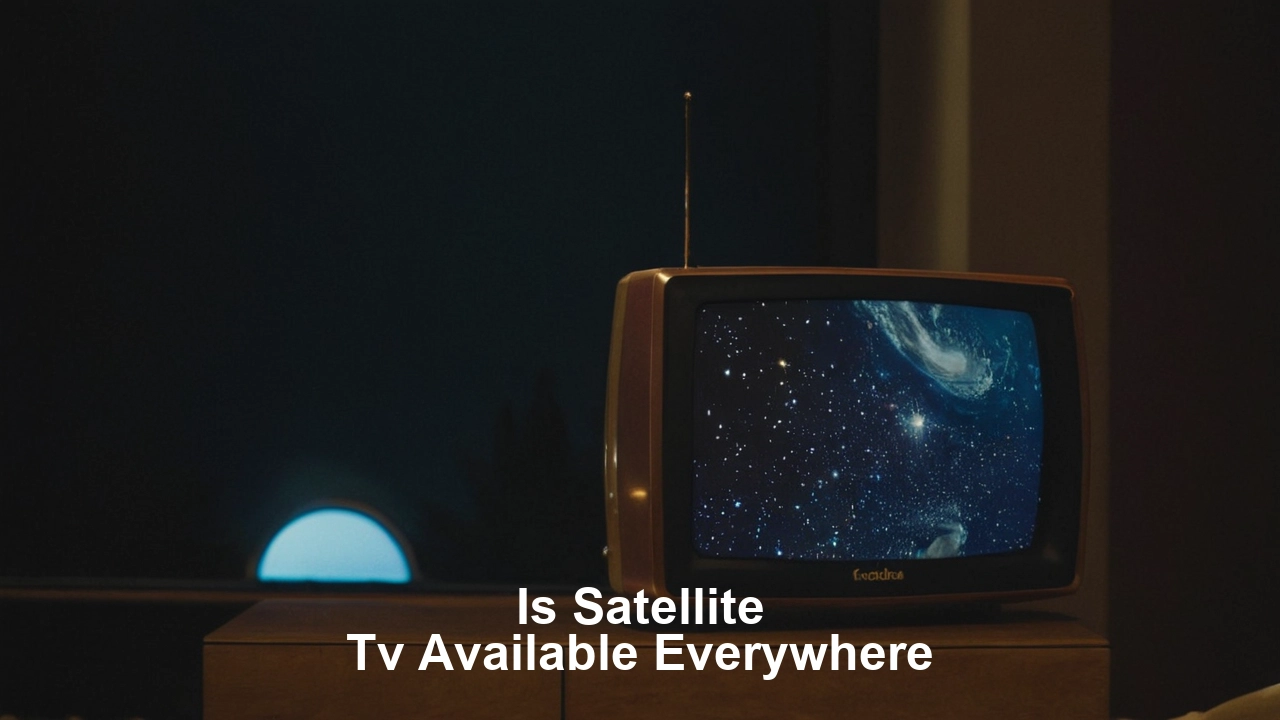Is satellite TV available everywhere?
Is satellite TV available everywhere?
Satellite TV has become a popular choice for many households around the world, offering a wide range of channels and high-quality pictures. But how widespread is satellite TV coverage? Is it truly available everywhere? In this blog post, we'll explore the reach of satellite TV, its advantages and limitations, and factors that can affect its availability.
How Satellite TV Works
To understand the availability of satellite TV, it's essential to know how it works. Satellite TV relies on communication satellites in geostationary orbit around the Earth. These satellites transmit television signals to satellite dishes installed at homes and businesses. The dish captures the signal and sends it to a receiver, which decodes the signal and displays it on your TV.
Global Coverage
One of the significant advantages of satellite TV is its extensive coverage. Unlike cable TV, which relies on physical infrastructure and is limited to specific regions, satellite TV can reach remote and rural areas where laying cables is impractical or too expensive. As long as you have a clear view of the sky and the satellite's position, you can receive satellite TV signals.
However, global coverage doesn't mean that every satellite TV service is available everywhere. Different satellite TV providers operate in specific regions, and their satellites cover particular areas. For example, DirectTV and Dish Network are prominent providers in the United States, while Sky and Freesat are popular in the United Kingdom. Therefore, the availability of specific satellite TV services depends on your location.
Factors Affecting Satellite TV Availability
Several factors can affect the availability and quality of satellite TV signals:
-
Geographic Location: Satellite TV coverage can vary based on your geographic location. For example, areas closer to the equator generally receive better signal strength because the satellite's position in the sky is higher. In contrast, regions near the poles may experience weaker signals due to the satellite's lower elevation.
-
Weather Conditions: Weather can impact satellite TV signals. Heavy rain, snow, or storms can cause signal degradation or temporary loss of service. This phenomenon, known as "rain fade," occurs because water droplets in the atmosphere can absorb or scatter the satellite signal.
-
Obstructions: Physical obstructions such as tall buildings, trees, or mountains can block the line of sight between the satellite dish and the satellite, leading to signal loss. It's essential to install the satellite dish in a location with an unobstructed view of the sky.
-
Satellite Footprint: The satellite's footprint, or coverage area, determines the regions where its signals are accessible. Satellites are designed to cover specific areas, and their footprints can vary in size. Some satellites have wide coverage areas that span multiple countries, while others focus on narrower regions.
Advantages of Satellite TV
Despite some limitations, satellite TV offers several advantages:
-
Wide Coverage: Satellite TV can reach remote and rural areas where cable TV is unavailable. This makes it a valuable option for viewers in areas with limited infrastructure.
-
High-Quality Picture: Satellite TV signals are transmitted in digital format, ensuring clear and high-quality pictures and sound. Many satellite TV providers offer HD and UHD channels, providing an immersive viewing experience.
-
Diverse Channel Selection: Satellite TV providers offer a wide range of channels, including international and niche channels. This diversity of content can cater to various interests and preferences.
-
Reliability: While weather conditions can affect satellite TV signals, overall, satellite TV is a reliable service. It is less prone to outages caused by physical infrastructure issues, such as cable cuts or equipment failures.
Limitations of Satellite TV
There are also some limitations to consider:
-
Weather Sensitivity: As mentioned earlier, weather conditions can affect satellite TV signals. Viewers in regions with frequent heavy rain or snow may experience signal disruptions.
-
Installation Complexity: Setting up a satellite TV system requires installing a satellite dish and ensuring it has a clear line of sight to the satellite. This can be more complex than connecting a cable TV service, and professional installation may be necessary.
-
Initial Costs: The initial costs of purchasing a satellite dish and receiver can be higher than cable TV installation fees. However, many providers offer subsidized or free equipment as part of their subscription plans.
-
Regional Restrictions: Some channels and content may be restricted to specific regions due to licensing agreements. Viewers in certain areas may not have access to the same channel lineup as those in other regions.
Conclusion
In conclusion, satellite TV is available in many parts of the world, offering extensive coverage, high-quality pictures, and a diverse selection of channels. However, its availability depends on geographic location, weather conditions, and physical obstructions. While satellite TV has several advantages, such as wide coverage and reliability, it also has some limitations, including weather sensitivity and initial costs.
If you're considering switching to satellite TV, it's essential to research the available providers in your area and evaluate their coverage, channel selection, and pricing. With the right provider and setup, satellite TV can be an excellent option for enjoying a wide range of entertainment from virtually anywhere.
Ready for the ultimate viewing experience? Call us at (469) 213-7481 to get your satellite TV started!


